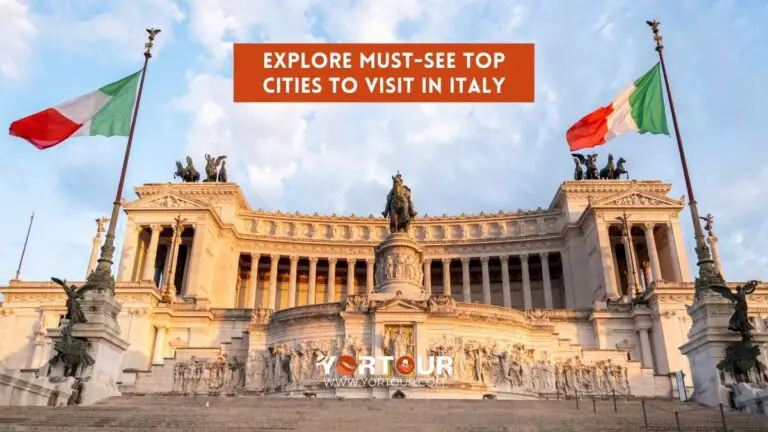Introduction Top Cities to Visit in Italy
Brief Overview of Italy Rich Cultural and Historical Heritage
Italy is a treasure trove of cultural and historical riches, offering travelers an unparalleled journey through time. From the ancient ruins of Rome to the Renaissance art of Florence, Italy cities are living museums that tell the story of human civilization. Each city boasts its own unique charm and significance, reflecting the diverse tapestry of Italy past and present.
Importance of Visiting Italy Iconic Cities
Visiting Italy iconic cities is more than just a travel experience; it’s a journey through history, art, and culture. These cities serve as custodians of the world most renowned artworks, architectural wonders, and culinary delights. Exploring them provides a deeper understanding of Italy influence on global culture and its continued relevance in the modern world.
Purpose of the Blog – A Comprehensive Guide to Italy Top Cities
This blog serves as a comprehensive guide to exploring Top Cities to Visit in Italy. It aims to provide detailed insights into the landmarks, hidden gems, and culinary delights of each city, helping travelers plan an unforgettable Italian adventure.
Rome – The Eternal City
Rome, the Eternal City, dazzles with its iconic landmarks like the Colosseum, Roman Forum, and Pantheon, along with Vatican City St. Peter’s Basilica and Sistine Chapel. Beyond these, discover hidden gems in Trastevere and Aventine Hill, and indulge in traditional Roman cuisine, including cacio e pepe and gelato.
Iconic Landmarks – Colosseum, Roman Forum, and Pantheon
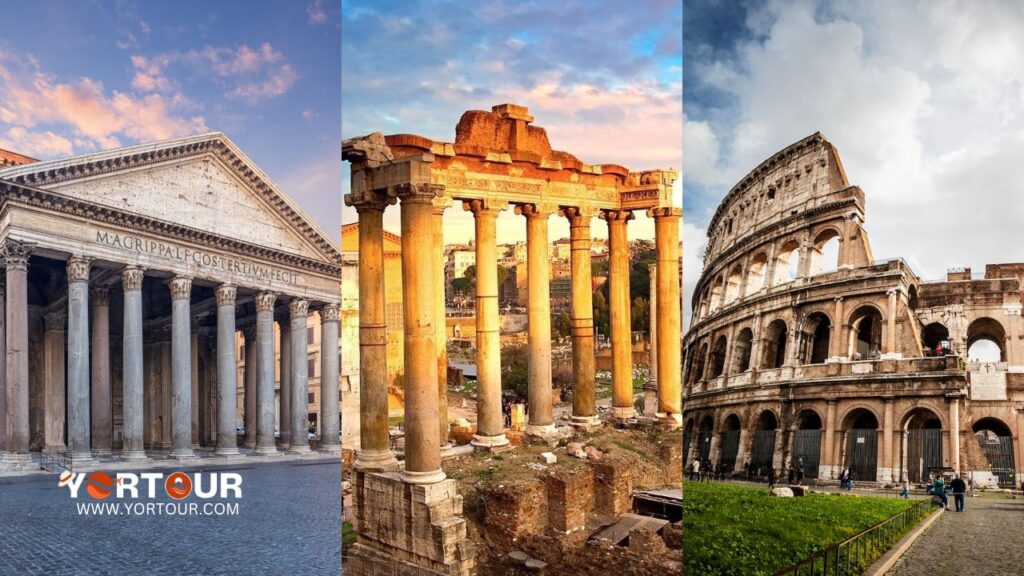
Rome, the Eternal City, is a testament to the grandeur of the ancient world. The Colosseum, a monumental amphitheater, stands as a symbol of Roman engineering and gladiatorial combat. The Roman Forum, once the heart of Roman public life, offers a glimpse into the empire political and social activities. The Pantheon, with its magnificent dome and oculus, exemplifies the architectural prowess of ancient Rome.
Vatican City – St. Peter’s Basilica and the Sistine Chapel

Vatican City, the spiritual epicenter of Catholicism, houses St. Peter’s Basilica and the Sistine Chapel. St. Peter’s Basilica, an architectural masterpiece, is home to Michelangelo Pietà and the awe-inspiring dome. The Sistine Chapel, adorned with Michelangelo frescoes, including the iconic Creation of Adam, is a sacred space that attracts millions of visitors each year.
Hidden Gems – Trastevere and Aventine Hill

Beyond the well-trodden paths lie Rome hidden gems. Trastevere, a bohemian neighborhood, charms with its narrow cobblestone streets, vibrant nightlife, and authentic trattorias. Aventine Hill offers a serene escape with its beautiful gardens and the famous keyhole view of St. Peter’s Basilica at the Knights of Malta headquarters.
Culinary Delights – Traditional Roman Cuisine

Rome culinary scene is a celebration of traditional flavors. Indulge in classic dishes like cacio e pepe, a simple yet flavorful pasta with pecorino cheese and black pepper, or try supplì, fried rice balls filled with mozzarella. No visit to Rome is complete without savoring a creamy gelato from one of its renowned gelaterias.
Venice – The Floating City
Venice, the Floating City, captivates with the Grand Canal, gondola rides, and St. Mark’s Basilica. Enjoy romantic spots like the Rialto Bridge and savor Venetian cuisine, including seafood and cicchetti.
Grand Canal and Gondola Rides

Venice, the Floating City, is a labyrinth of canals and bridges. The Grand Canal, the city main waterway, is lined with stunning palaces and bustling with gondolas. A gondola ride offers a romantic and unique way to explore Venice, gliding through its serene canals and under its historic bridges.
St. Mark’s Square and Basilica
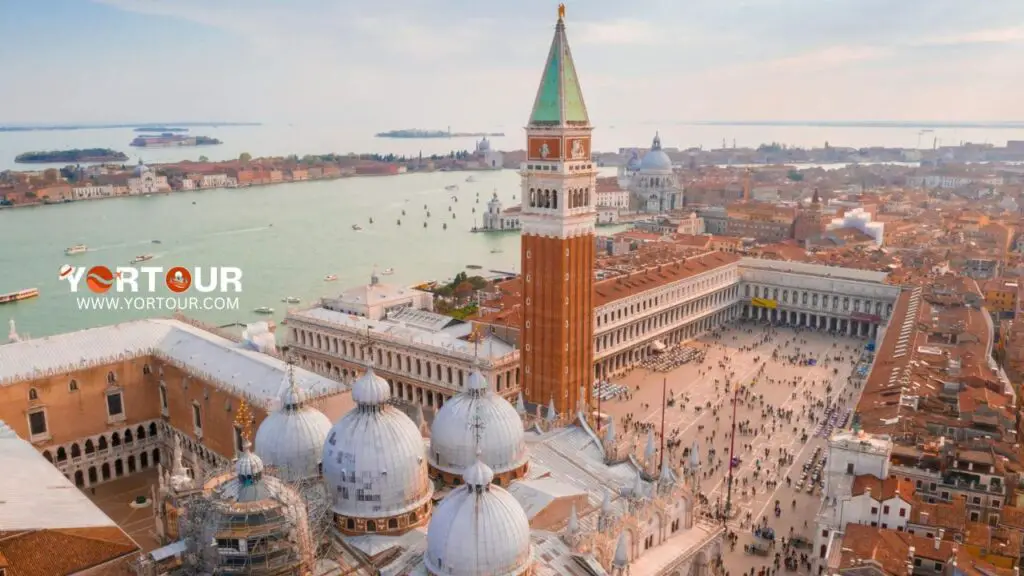
St. Mark’s Square, the heart of Venice, is a vibrant hub of activity. Dominated by St. Mark’s Basilica, an architectural gem adorned with Byzantine mosaics, the square is surrounded by elegant cafes and historic buildings. Climb the Campanile for panoramic views of the city and the lagoon.
Romantic Venues – Rialto Bridge and Bridge of Sighs

Venice romantic allure is epitomized by its iconic bridges. The Rialto Bridge, with its bustling market and stunning views of the Grand Canal, is a must-visit. The Bridge of Sighs, connecting the Doge Palace to the prisons, offers a poignant glimpse into Venice past and a picturesque setting for romantic strolls.
Venetian Cuisine – Seafood and Cicchetti

Venetian cuisine is a testament to the city maritime heritage. Savor dishes like sarde in saor, sweet and sour sardines, or risotto al nero di seppia, black ink risotto. Enjoy cicchetti, Venetian tapas, at a local bacaro, accompanied by a glass of Prosecco or spritz.
Florence – The Cradle of the Renaissance
Florence, the Cradle of the Renaissance, offers art masterpieces at Uffizi and Accademia Galleries, architectural marvels like the Florence Cathedral and Ponte Vecchio, and vibrant local culture in Oltrarno. Enjoy hearty Tuscan cuisine, featuring bistecca alla Fiorentina and Chianti wine.
Art Masterpieces – Uffizi Gallery and Accademia Gallery
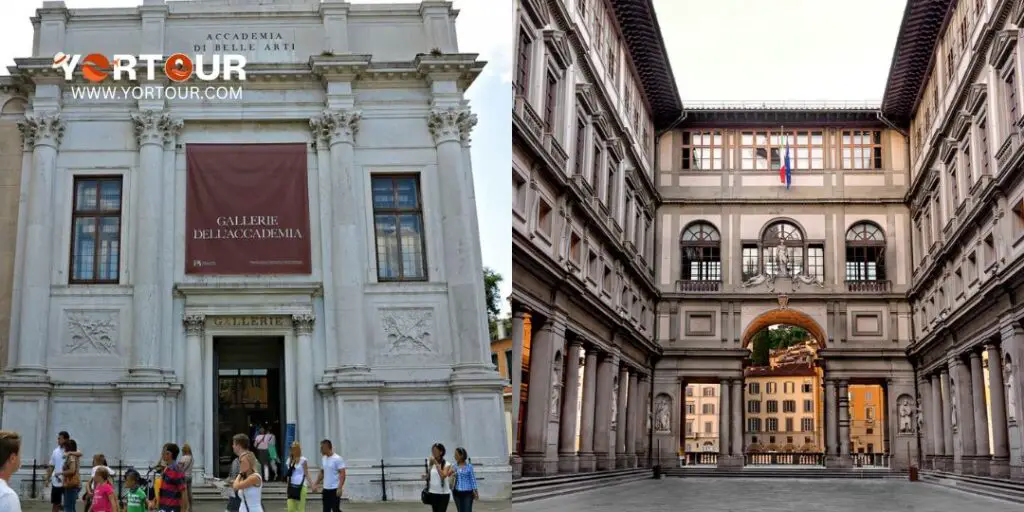
Florence, the Cradle of the Renaissance, is a haven for art lovers. The Uffizi Gallery houses masterpieces by Botticelli, Leonardo da Vinci, and Michelangelo, offering an unparalleled journey through Renaissance art. The Accademia Gallery, home to Michelangelo David, showcases the sublime beauty and strength of this iconic sculpture.
Architectural Wonders – Florence Cathedral and Ponte Vecchio
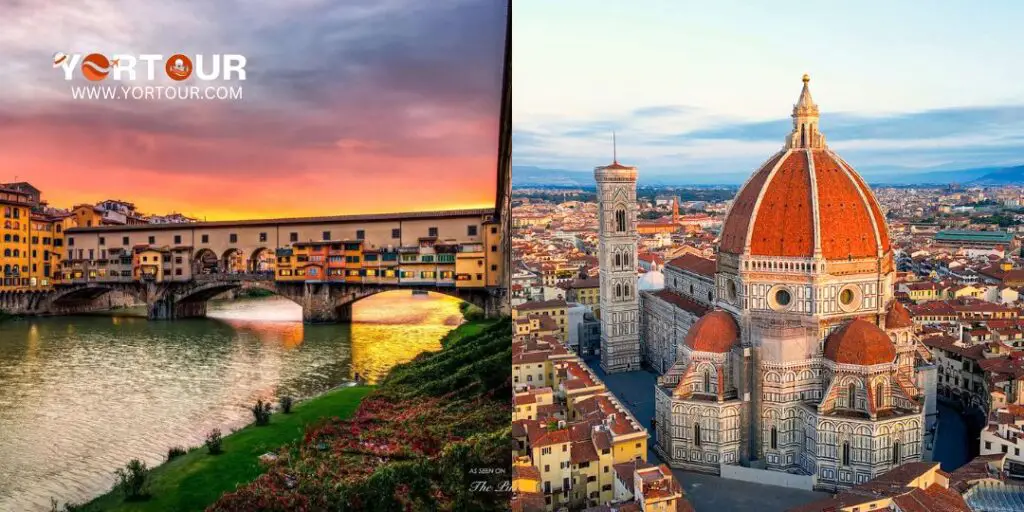
Florence architectural wonders are a testament to its glorious past. The Florence Cathedral, with its iconic dome by Brunelleschi, dominates the skyline and offers breathtaking views from the top. The Ponte Vecchio, an ancient bridge lined with jewelry shops, spans the Arno River, creating a picturesque setting steeped in history.
Exploring Oltrarno – Artisan Shops and Local Markets

Cross the Arno River to explore Oltrarno, a district brimming with artisan shops and local markets. Discover traditional craftsmanship in workshops producing leather goods, jewelry, and marbled paper. Visit the bustling Mercato di Sant’Ambrogio for fresh produce, cheeses, and local delicacies, offering a taste of Florentine life.
Tuscan Cuisine – Bistecca alla Fiorentina and Chianti Wine
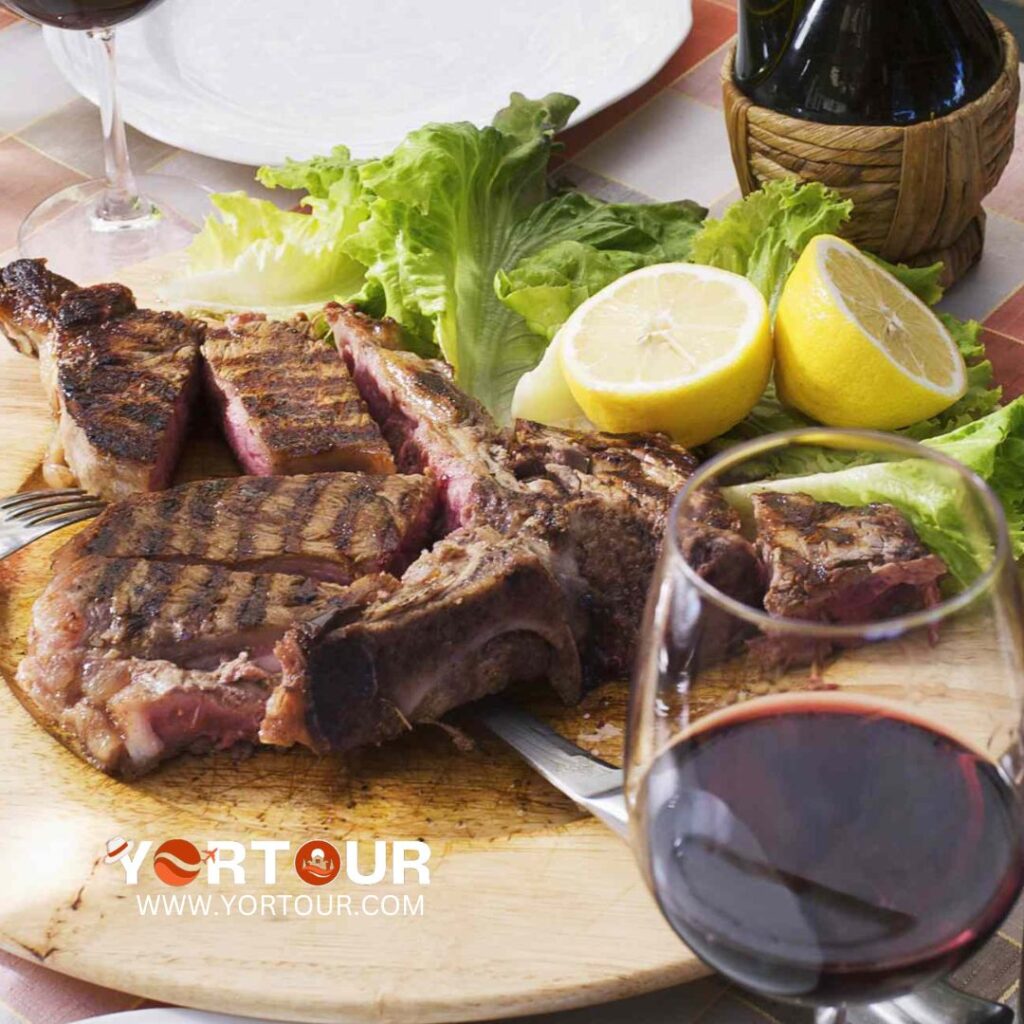
Florentine cuisine is hearty and flavorful, reflecting the region agricultural bounty. Savor a perfectly grilled bistecca alla Fiorentina, a T-bone steak seasoned with olive oil and rosemary. Pair your meal with a glass of Chianti wine, renowned for its robust flavor, produced in the nearby Tuscan vineyards.
Milan – The Fashion Capital
Milan, the Fashion Capital, combines historical sites like Milan Cathedral and Sforza Castle with cultural gems such as La Scala and Leonardo Last Supper. Renowned for luxury shopping at Galleria Vittorio Emanuele II and Via Montenapoleone, Milan also delights with rich cuisine like risotto alla Milanese and ossobuco.
Historic Sites – Milan Cathedral and Sforza Castle
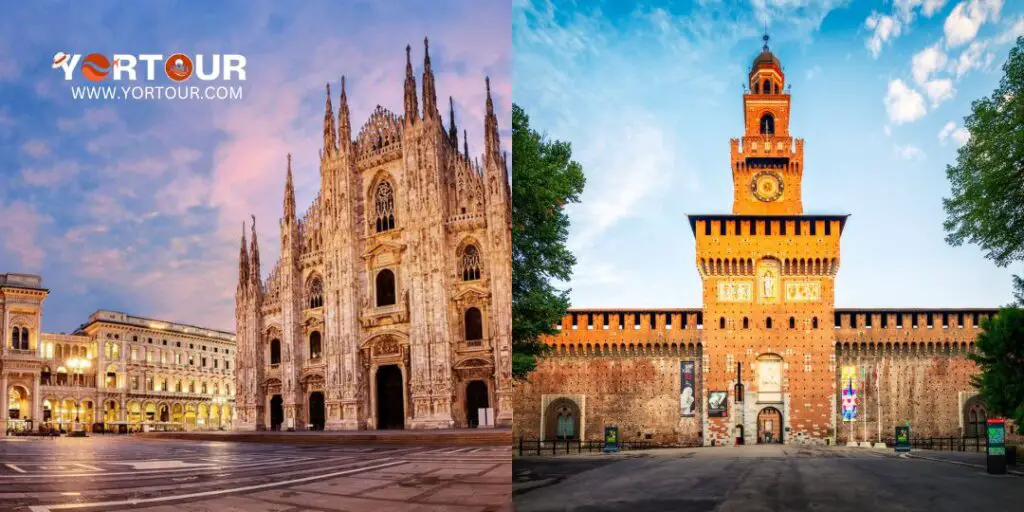
Milan, the Fashion Capital, seamlessly blends historical grandeur with modern sophistication. The Milan Cathedral, or Duomo, is a Gothic masterpiece with a stunning façade and rooftop views. Sforza Castle, a Renaissance fortress, houses museums and art collections, reflecting Milan rich cultural heritage.
Cultural Highlights – La Scala Opera House and Leonardo Last Supper
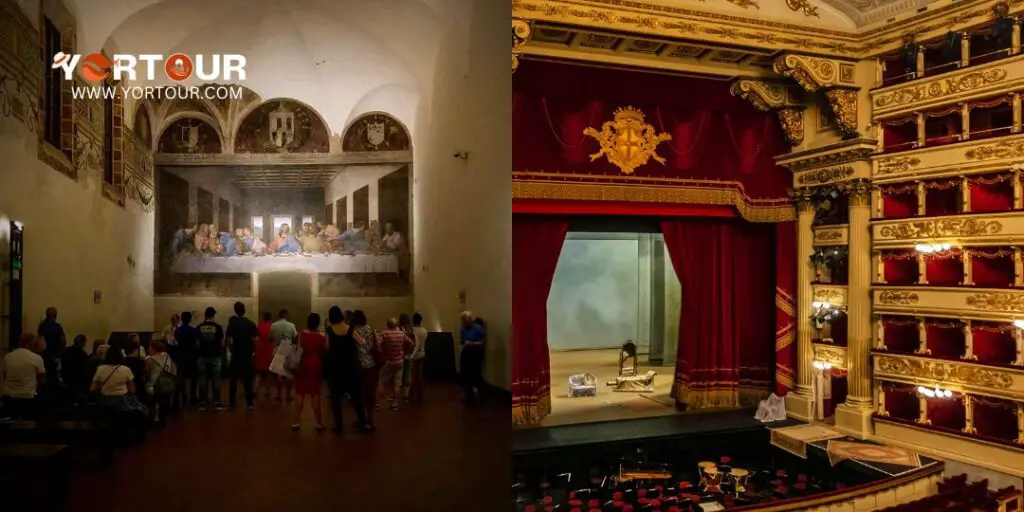
Milan cultural scene is illustrious. La Scala Opera House, an iconic venue, has hosted world-renowned performances since 1778. Leonardo da Vinci Last Supper, located in the Convent of Santa Maria delle Grazie, is a Renaissance masterpiece that continues to captivate with its profound artistic and historical significance.
Shopping Hotspots – Galleria Vittorio Emanuele II and Via Montenapoleone
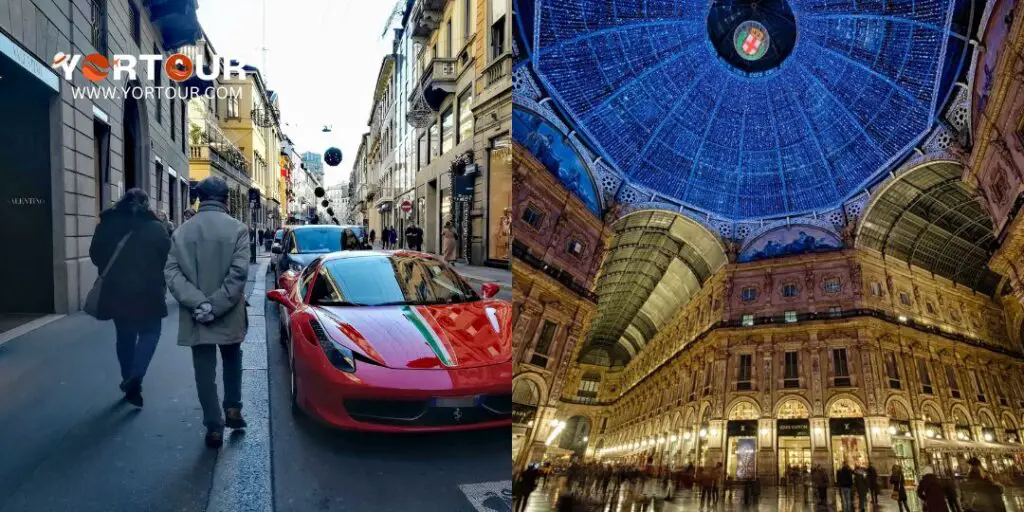
Milan is a shopper paradise. The Galleria Vittorio Emanuele II, a grand 19th-century shopping arcade, offers luxury boutiques and elegant cafés under its stunning glass dome. Via Montenapoleone, part of the Quadrilatero della Moda, is lined with designer stores, epitomizing Milan status as a global fashion hub.
Milanese Cuisine – Risotto alla Milanese and Ossobuco

Milanese cuisine is rich and satisfying. Indulge in risotto alla Milanese, a creamy saffron-infused rice dish, often paired with ossobuco, a tender veal shank braised with vegetables and wine. These traditional dishes, rooted in Lombardy culinary traditions, provide a delectable taste of Milan.
Naples – Gateway to the Amalfi Coast
Naples, the gateway to the Amalfi Coast, offers a rich historical experience with Pompeii and Herculaneum, vibrant streets like Spaccanapoli, coastal beauty in Capri and Sorrento, and renowned Neapolitan cuisine featuring pizza Margherita and sfogliatella.
Historical Significance – Pompeii and Herculaneum

Naples, the gateway to the Amalfi Coast, is steeped in historical significance. The ancient cities of Pompeii and Herculaneum, preserved by volcanic ash from Mount Vesuvius, offer a poignant glimpse into Roman life. Wander through well-preserved ruins, marveling at mosaics, frescoes, and artifacts that echo the past.
Vibrant Streets – Spaccanapoli and San Gregorio Armeno

Naples streets pulsate with energy and character. Spaccanapoli, a narrow, bustling street, slices through the historic center, teeming with shops, eateries, and churches. San Gregorio Armeno, famed for its nativity scenes, features artisans crafting intricate figurines, a testament to Naples rich cultural traditions.
Coastal Beauty – Capri and Sorrento
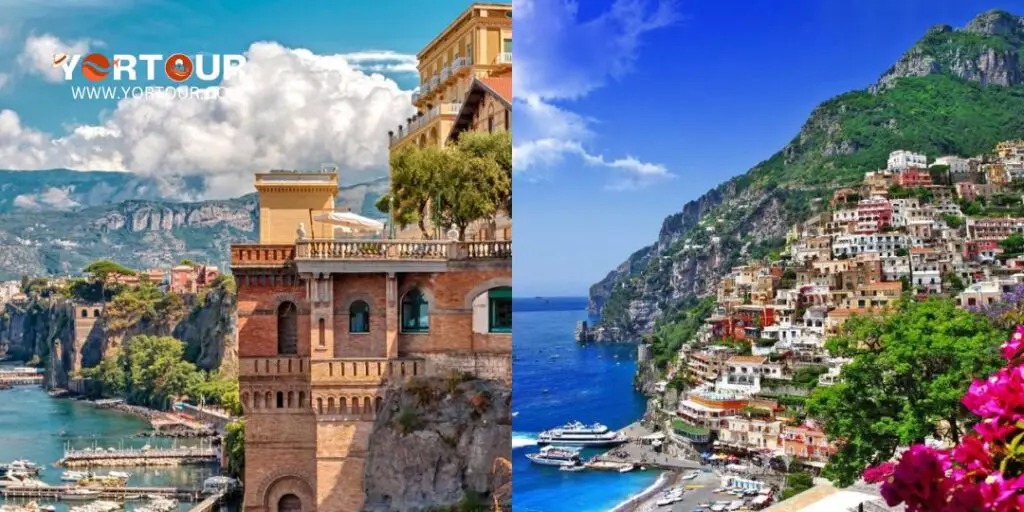
Naples coastal beauty is epitomized by Capri and Sorrento. Capri, an island paradise, beckons with its azure waters, dramatic cliffs, and upscale boutiques. Sorrento, perched on a cliff overlooking the Bay of Naples, enchants with its lemon groves, charming streets, and panoramic vistas, offering a serene escape.
Neapolitan Cuisine – Pizza Margherita and Sfogliatella
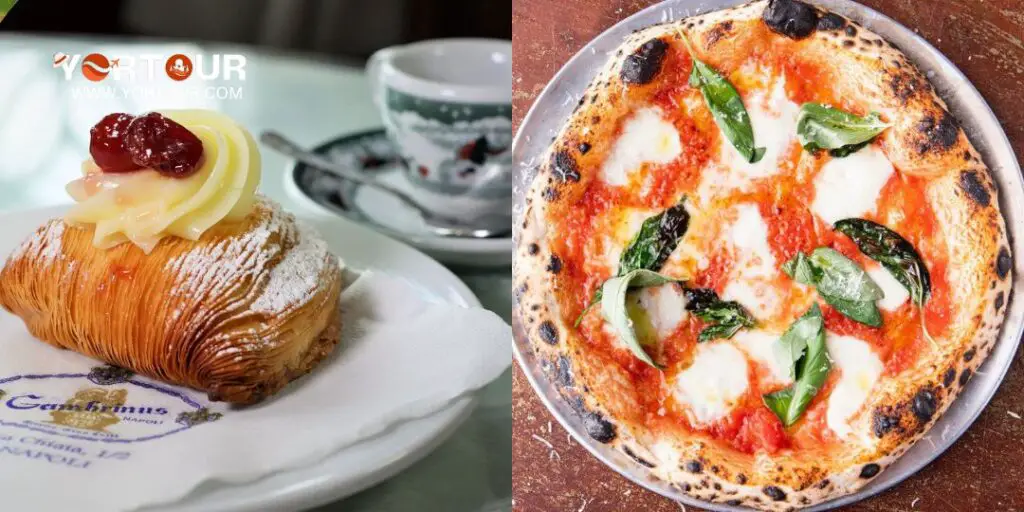
Neapolitan cuisine is renowned for its simplicity and flavor. Indulge in a classic pizza Margherita, with its perfect blend of tomato, mozzarella, and basil, baked in a wood-fired oven. For a sweet treat, savor sfogliatella, a flaky pastry filled with ricotta and candied fruit, embodying Naples culinary prowess.
Tuscany – Rolling Hills and Vineyards
Tuscany rolling hills and vineyards offer scenic drives through Val d’Orcia and the Chianti region, medieval towns like Siena and San Gimignano, wine tasting in Tuscan vineyards, and rustic cuisine such as pappardelle al cinghiale and ribollita, all showcasing the region rich cultural and culinary heritage.
Scenic Drives – Val d’Orcia and Chianti Region

Tuscany rolling hills and vineyards create a picturesque landscape. Scenic drives through Val d’Orcia and the Chianti region reveal idyllic vistas of cypress-lined roads, vineyards, and medieval villages. These routes offer a serene escape, allowing you to immerse yourself in Tuscany natural beauty.
Medieval Towns – Siena and San Gimignano
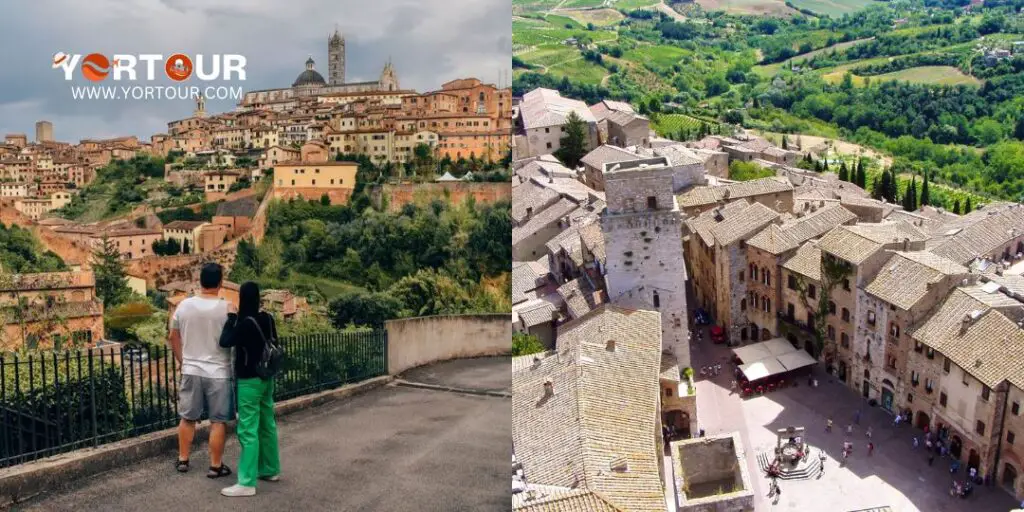
Tuscany medieval towns are steeped in history and charm. Siena, with its fan-shaped Piazza del Campo and Gothic cathedral, transports you to a bygone era. San Gimignano, known for its medieval towers, offers a glimpse into Tuscany past, with its narrow streets and well-preserved architecture.
Wine Tasting – Tuscan Vineyards and Wine Tours

Tuscany is synonymous with wine. Embark on wine tours in renowned regions like Chianti, Montalcino, and Montepulciano. Visit family-owned vineyards, where you can taste exquisite wines, learn about winemaking processes, and enjoy the stunning scenery, experiencing Tuscany rich viticultural heritage.
Tuscan Cuisine – Pappardelle al Cinghiale and Ribollita
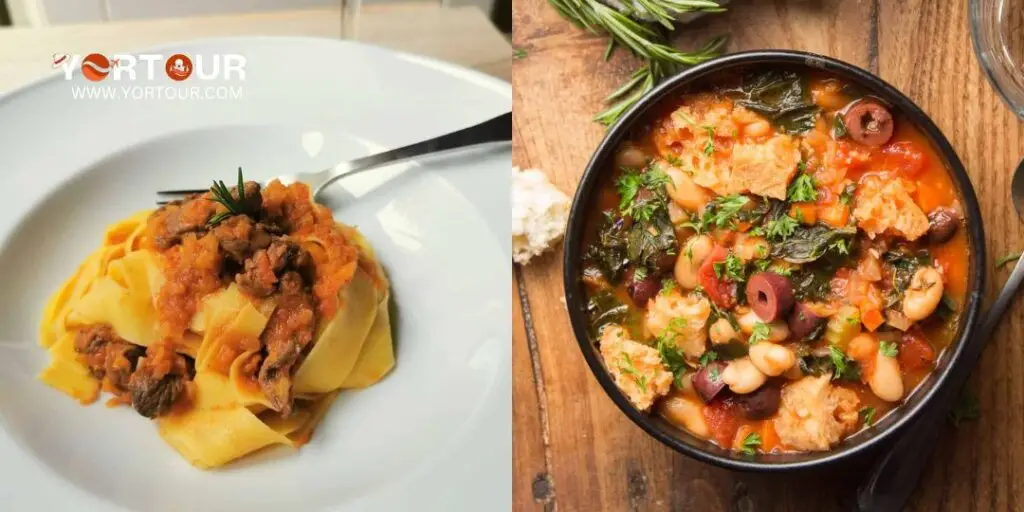
Tuscan cuisine is rustic and flavorful. Savor pappardelle al cinghiale, wide ribbons of pasta with a rich wild boar sauce, or ribollita, a hearty vegetable and bread soup. These traditional dishes, rooted in Tuscan culinary traditions, showcase the region love for fresh, local ingredients.
Sicily – Island of Wonders
Sicily, the Island of Wonders, captivates with ancient ruins like the Valley of the Temples and Taormina, stunning natural beauty from Mount Etna to the Aeolian Islands, a rich cultural fusion seen in Palermo and Syracuse, and a diverse culinary scene featuring arancini and cannoli, celebrating Sicily vibrant heritage and flavors.
Ancient Ruins – Valley of the Temples and Taormina

Sicily, an island of wonders, boasts remarkable ancient ruins. The Valley of the Temples in Agrigento features well-preserved Greek temples, standing as a testament to Sicily historical significance. Taormina, perched on a hillside, offers stunning views of Mount Etna and ancient theaters that host cultural events.
Natural Beauty – Mount Etna and Aeolian Islands

Sicily natural beauty is breathtaking. Mount Etna, Europe highest and most active volcano, offers thrilling hikes and panoramic views. The Aeolian Islands, a UNESCO World Heritage site, entice with their volcanic landscapes, crystal-clear waters, and charming villages, providing a perfect blend of adventure and relaxation.
Cultural Fusion – Palermo and Syracuse

Sicily cultural fusion is evident in its cities. Palermo, the vibrant capital, showcases a blend of Arab, Norman, and Baroque architecture, with bustling markets and historic sites. Syracuse, with its ancient Greek theater and stunning cathedral, reflects the island rich cultural tapestry and historical significance.
Sicilian Cuisine – Arancini and Cannoli

Sicilian cuisine is a feast for the senses. Enjoy arancini, crispy rice balls filled with ragù or cheese, and cannoli, sweet ricotta-filled pastries. These iconic dishes, along with fresh seafood and vibrant produce, highlight Sicily culinary diversity and its passion for bold, robust flavors.
Cinque Terre – Coastal Charm

Cinque Terre, known for its coastal charm, features picturesque villages like Monterosso and Vernazza, scenic hiking trails such as the Sentiero Azzurro, relaxing beach escapes, and delicious Ligurian cuisine including pesto Genovese and focaccia. This coastal gem invites visitors to immerse themselves in its beauty, flavors, and laid-back Mediterranean ambiance.
Picturesque Villages – Monterosso, Vernazza, Corniglia, Manarola, and Riomaggiore
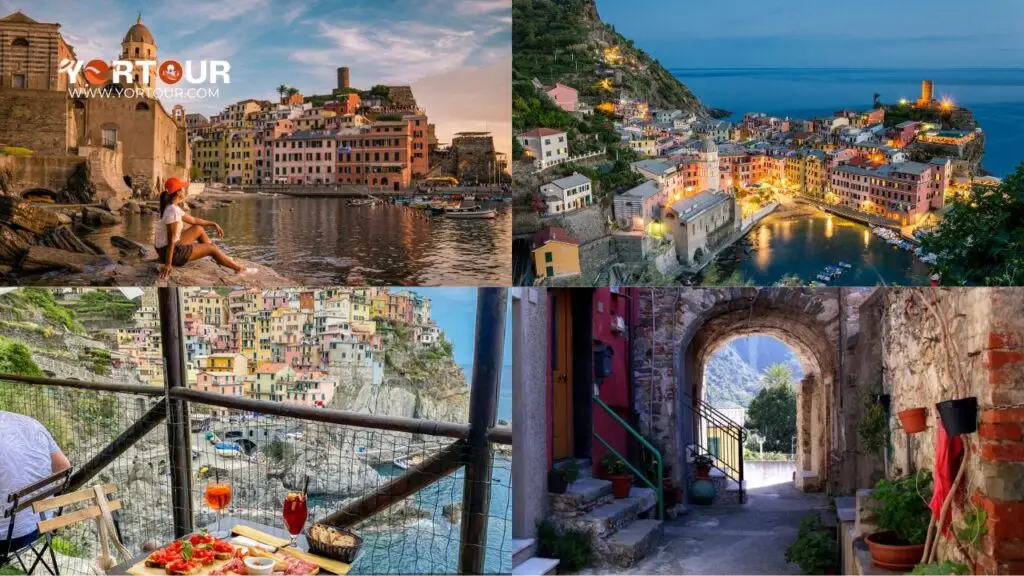
Cinque Terre, a cluster of five coastal villages, exudes charm and beauty. Monterosso, Vernazza, Corniglia, Manarola, and Riomaggiore, each with its unique character, offer colorful houses, scenic harbors, and stunning sea views. These villages, nestled between rugged cliffs and the Ligurian Sea, create a picturesque setting.
Hiking Trails – Sentiero Azzurro and Via dell’Amore

Cinque Terre hiking trails provide breathtaking vistas and a sense of adventure. The Sentiero Azzurro, or Blue Trail, connects the five villages, offering panoramic views of the coastline. The Via dell’Amore, or Path of Love, is a romantic trail between Riomaggiore and Manarola, perfect for leisurely walks with stunning sea views.
Beach Escapes – Best Spots for Sun and Sea

Cinque Terre beaches are idyllic spots for sun and sea. Monterosso sandy beach is ideal for sunbathing and swimming, while Vernazza small harbor offers a charming setting for a dip in the sea. These beach escapes provide a relaxing respite after exploring the scenic trails and picturesque villages.
Ligurian Cuisine – Pesto Genovese and Focaccia

Ligurian cuisine is fresh and flavorful. Savor pesto Genovese, a fragrant basil sauce typically served with trofie pasta, and focaccia, a soft, olive oil-infused bread. These regional specialties, along with fresh seafood and local wines, offer a delicious taste of Cinque Terre culinary heritage.
Verona – City of Romance
Verona, the city of romance, enchants visitors with its Shakespearean heritage at Juliet’s House, historic marvels like the Verona Arena and Piazza delle Erbe, and idyllic spots such as Ponte Pietra and Giardino Giusti. Indulge in Veronese cuisine with dishes like risotto all’Amarone and pastissada de caval, showcasing the city cultural richness and culinary delights.
Shakespearean Legacy – Juliet’s House and Balcony

Verona, the city of romance, is forever linked to Shakespeare tale of star-crossed lovers. Juliet’s House, with its famous balcony, attracts lovers from around the world, eager to experience the romance of Romeo and Juliet. The house charming courtyard and evocative atmosphere make it a must-visit.
Historic Sites – Verona Arena and Piazza delle Erbe

Verona historic sites are a testament to its rich heritage. The Verona Arena, a Roman amphitheater, hosts spectacular operas and concerts, offering a unique blend of history and culture. Piazza delle Erbe, the city vibrant market square, is surrounded by historic buildings and bustling with life.
Romantic Spots – Ponte Pietra and Giardino Giusti

Verona romantic spots provide perfect settings for intimate moments. Ponte Pietra, a Roman arch bridge, offers picturesque views of the Adige River and the city. Giardino Giusti, a Renaissance garden, enchants with its manicured hedges, statues, and panoramic vistas, providing a tranquil escape.
Veronese Cuisine – Risotto all’Amarone and Pastissada de Caval
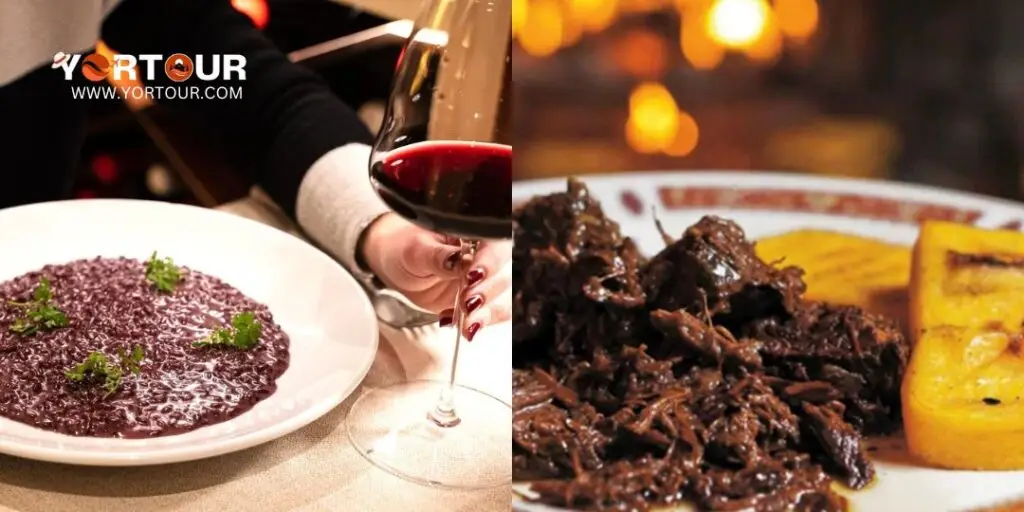
Veronese cuisine is rich and indulgent. Risotto all’Amarone, made with the region famous Amarone wine, offers a deep, complex flavor. Pastissada de Caval, a slow-cooked horse meat stew, reflects Verona culinary traditions, providing a hearty and flavorful dining experience.
Lake Como – Elegance and Serenity
Lake Como, known for its elegance and serenity, captivates with stunning landscapes at Villa del Balbianello and Villa Carlotta. Explore charming lakeside towns like Bellagio, Varenna, and Menaggio, offering leisurely strolls and scenic views. Engage in outdoor activities such as sailing, hiking, and cycling amidst the picturesque surroundings, then indulge in local delights like missoltino and polenta to complete the experience of Lake Como cultural and natural allure.
Stunning Landscapes – Villa del Balbianello and Villa Carlotta

Lake Como, a haven of elegance and serenity, boasts stunning landscapes. Villa del Balbianello, with its terraced gardens and breathtaking views, is a romantic retreat. Villa Carlotta, renowned for its botanical gardens and art collection, offers a serene setting to appreciate nature beauty.
Lakeside Towns – Bellagio, Varenna, and Menaggio

Lake Como lakeside towns exude charm and sophistication. Bellagio, known as the “Pearl of the Lake,” features cobblestone streets, elegant villas, and stunning views. Varenna and Menaggio, each with their unique allure, offer picturesque promenades and delightful cafes, perfect for a leisurely exploration.
Outdoor Activities – Sailing, Hiking, and Cycling
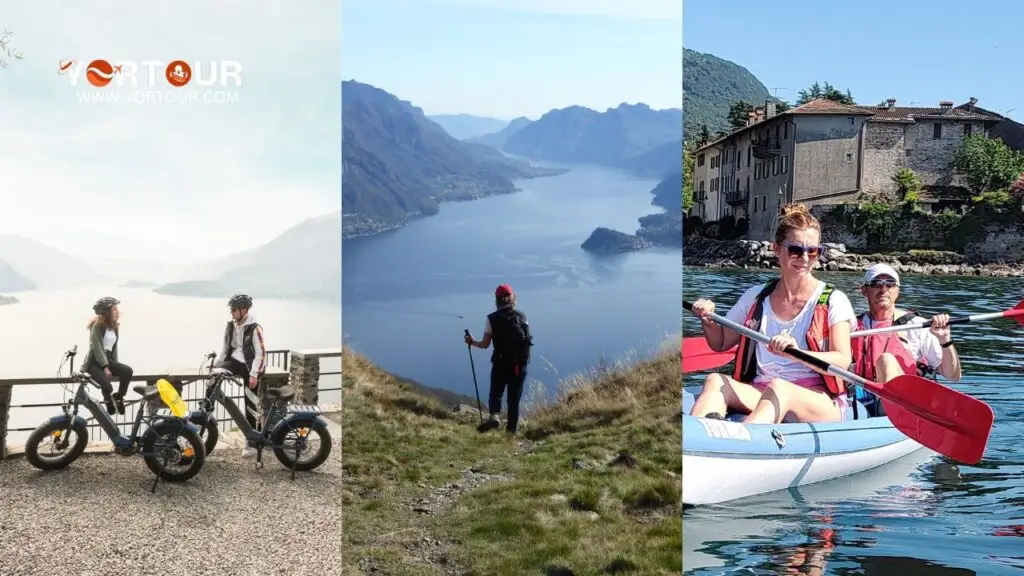
Lake Como natural beauty invites outdoor activities. Sailing on the lake tranquil waters provides a unique perspective of the surrounding mountains and villages. Hiking trails, such as the Greenway del Lago di Como, offer scenic routes through lush landscapes. Cycling enthusiasts can enjoy picturesque paths along the lake edge.
Local Cuisine – Missoltino and Polenta

Lake Como cuisine is rooted in local traditions. Missoltino, sun-dried lake fish, is often served with polenta, a cornmeal dish that complements its flavors. These regional specialties, along with locally produced wines, provide a delightful taste of the lake culinary heritage.
Conclusion
Recap of Italy Must-Visit Destinations
Italy cities are a mosaic of historical grandeur, artistic brilliance, and culinary excellence. From Rome ancient ruins to Venice enchanting canals, each city offers a unique experience that enriches the traveler journey. Exploring these cities provides a comprehensive understanding of Italy rich cultural and historical legacy.
Tips for Planning an Italian Itinerary
When planning an Italian itinerary, prioritize the must-see cities and allocate sufficient time to explore each destination landmarks, hidden gems, and culinary delights. Consider traveling during the shoulder seasons to avoid crowds and enjoy a more relaxed experience. Embrace the local culture, indulge in regional cuisines, and take time to savor the moments.
Encouragement to Explore Beyond the Top 10
While this guide highlights the top cities to visit in Italy, countless other towns and regions offer unique experiences and undiscovered treasures. Venture beyond the well-known destinations to uncover Italy diverse landscapes, traditions, and communities. Every corner of Italy has its own story to tell, waiting to be explored.
Final Thoughts and Travel Inspiration
Italy allure is timeless and irresistible. Whether you’re a history buff, an art enthusiast, a culinary adventurer, or a romantic at heart, Italy promises a journey that will captivate your senses and leave you with lasting memories. Pack your bags, immerse yourself in Italy enchanting cities, and embark on an unforgettable adventure.
FAQs (Frequently Asked Questions)
1. What are the top cities to visit in Italy and why?
Italy boasts several top cities renowned for their rich history, culture, and beauty. Rome, Florence, Venice, Milan, Naples, and Sicily cities like Palermo and Taormina are among the must-visit destinations. Each offers unique experiences, from ancient ruins and Renaissance art to romantic canals and culinary delights.
2. How many days should I spend in each city to explore its highlights?
- Rome: 3-4 days to explore its ancient sites, Vatican City, and vibrant neighborhoods.
- Florence: 2-3 days for art galleries, Duomo, and day trips to Tuscan countryside.
- Venice: 2-3 days to explore canals, St. Mark Square, and nearby islands.
- Milan: 2 days for fashion, art, and exploring historic sites.
- Naples: 2-3 days for Pompeii, historic center, and coastal beauty.
- Sicilian cities: 2-3 days each for ancient ruins, coastal landscapes, and unique cuisine.
3. What are the must-see landmarks in Rome?
The Colosseum, Roman Forum, Pantheon, Vatican City (including St. Peter’s Basilica and the Sistine Chapel), Trevi Fountain, and Spanish Steps are iconic landmarks that highlight Rome historical and cultural significance.
4. How can I visit the Vatican City and what should I see there?
Visit Vatican City to see St. Peter’s Basilica, Michelangelo Pietà, and climb the dome for panoramic views. Explore the Vatican Museums, including the Sistine Chapel with its famous ceiling frescoes, such as the Creation of Adam.
5. What are the best neighborhoods to stay in Venice for a romantic getaway?
The neighborhoods of San Marco, Dorsoduro, and Cannaregio are ideal for a romantic Venice stay, offering picturesque canals, charming cafes, and easy access to landmarks like St. Mark’s Square and the Grand Canal.
6. What art masterpieces can I see in Florence and where?
In Florence, visit the Uffizi Gallery for works by Botticelli and Leonardo da Vinci, and the Accademia Gallery to see Michelangelo David. The Florence Cathedral and its dome, along with Ponte Vecchio, also showcase Renaissance architecture.
7. What is Milan famous for besides fashion?
Milan is renowned for its historical landmarks like the Milan Cathedral (Duomo) and Sforza Castle. It’s also a cultural hub with La Scala Opera House and renowned artworks such as Leonardo da Vinci Last Supper.
8. How do I plan a trip to Naples and the Amalfi Coast?
Start in Naples to explore Pompeii and Herculaneum, then travel along the Amalfi Coast to enjoy coastal beauty in towns like Sorrento and Positano. Capri and Ischia offer additional island escapes.
9. What are the best day trips from Tuscany main cities?
From Tuscany, take day trips to Siena for its Gothic architecture and Piazza del Campo, San Gimignano for medieval towers, and wine tours in Chianti or Montalcino for vineyard visits and wine tasting.
10. How can I experience Sicilian culture and cuisine while visiting its cities?
Experience Sicilian culture through visits to the Valley of the Temples in Agrigento, Taormina ancient theaters, and Palermo blend of Arab-Norman architecture. Enjoy Sicilian cuisine with dishes like arancini (rice balls) and cannoli (pastry filled with ricotta).
